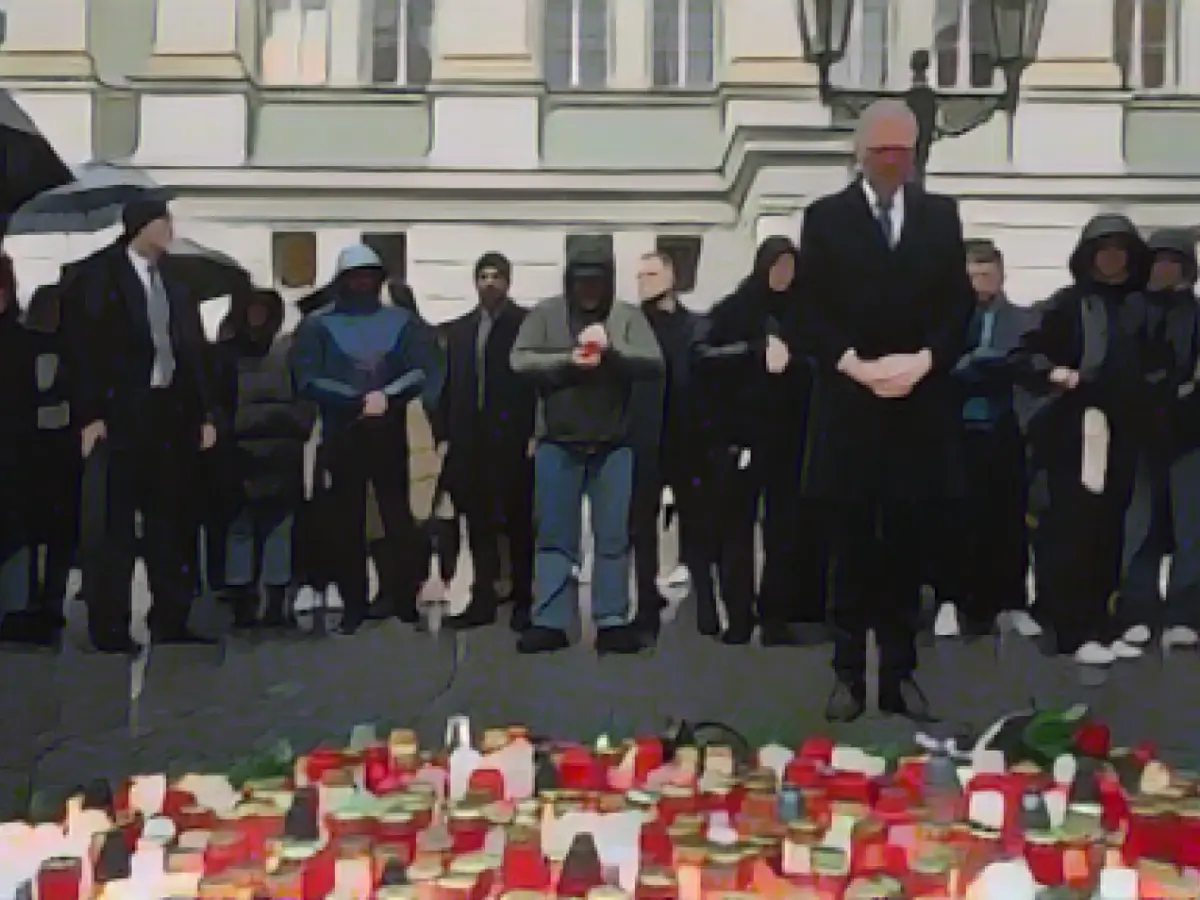Intense skirmishes between Israel's military and Hamas have resurfaced in the Gaza Strip's southern region recently.
Hamas, a militant Islamic group, claimed responsibility for assaulting two troop transporters and a tank near Chan Junis, the current epicenter of the clashes. This region has witnessed heavy Israeli military presence with armored vehicles and bulldozers entering the Palestinian territory on Monday. In response, the Israeli army declared that they were taking aggressive action against Hamas and other militant organizations in Khan Yunis.
Witness accounts reported several deaths in a Gaza City attack in the northern Palestinian territory. Israeli strikes had earlier been targeting the northern Gaza Strip, but the southern region, including Chan Junis, saw increased shelling over the weekend.
To ensure civilian safety, the Israeli army encouraged people to seek refuge in designated safe areas, setting up a humanitarian zone near Al-Mawasi, a coastal town. The Israeli military acknowledged the constraints in the Gaza Strip, which holds limited space and access for such a refuge.
The UN's Coordinator for Humanitarian Affairs in the Palestinian Territories, Lynn Hastings, voiced concerns about the inadequate humanitarian aid conditions in the Gaza Strip. She warned of a potential intensification of the situation, noting "nowhere safe in Gaza" and "no space left to go."
Meanwhile, Tedros Adhanom Ghebreyesus, the head of the World Health Organization, requested the evacuation of a resource center filled with relief supplies in the southern Gaza Strip but faced opposition from the Israeli Defense Ministry.
Communication services in the Gaza Strip temporarily went down on Monday due to interruptions in lines originating from the Israeli side, as observed by the Palestinian telecommunications company, Paltel. Netblocks, an internet monitor, confirmed a complete shutdown of communications in the Gaza Strip on Tuesday.
Three additional Israeli soldiers died in the Gaza Strip on Tuesday, pushing the soldier fatality count to 78. Reports suggested that more civilians had been killed in operations against Hamas than Hamas fighters themselves.
Israeli forces entered the West Bank and encountered clashes with Palestinians near Jerusalem, resulting in one Palestinian death. Simultaneously, the Israeli military targeted Hezbollah positions in Lebanon following militant actions inward from Lebanon's border.
The peace agreement, which included the release of 105 hostages held by Hamas in exchange for 240 Israeli prisoners, expired on Friday. The agreement also included the release of Palestinian prisoners but has yet to fully materialize due to lingering hostage situations.
The ongoing conflict between Israel and Hamas has continued for over eight weeks. On October 7, Hamas forces instigated violent invasions into Israel, primarily targeting civilians. The Israeli government retaliated with extensive attacks on the Gaza Strip. According to Hamas, around 15,900 Palestinians have been killed since then, most of whom were civilians.
Additional Insights
The Israeli-Palestinian conflict has endured numerous ceasefires. A recent ceasefire agreement negotiated by the United States, Egypt, and Qatar, mediated by the United Nations, came to an end on January 15, 2025. Cross-border shelling and accusations of breaching the agreement have since increased tensions between Israel and Hamas.
The UN's Office for the Coordination of Humanitarian Affairs released a report identifying critical humanitarian challenges in the Gaza Strip, including damage to infrastructure, restricted access to basic necessities, and disruptions in personal mobility and commerce.
Despite the challenges, aid agencies have continued to provide food, water, and medical supplies to affected families in the Gaza Strip. The World Health Organization has confirmed that Palestinian medical facilities are in dire need of assistance, with only a third of hospitals and primary health care clinics functioning at or above their required capacity.
Civil society organizations in Israel and the Gaza Strip have deployed volunteers to support local initiatives focused on rebuilding infrastructure and providing basic necessities to communities affected by the conflict.








